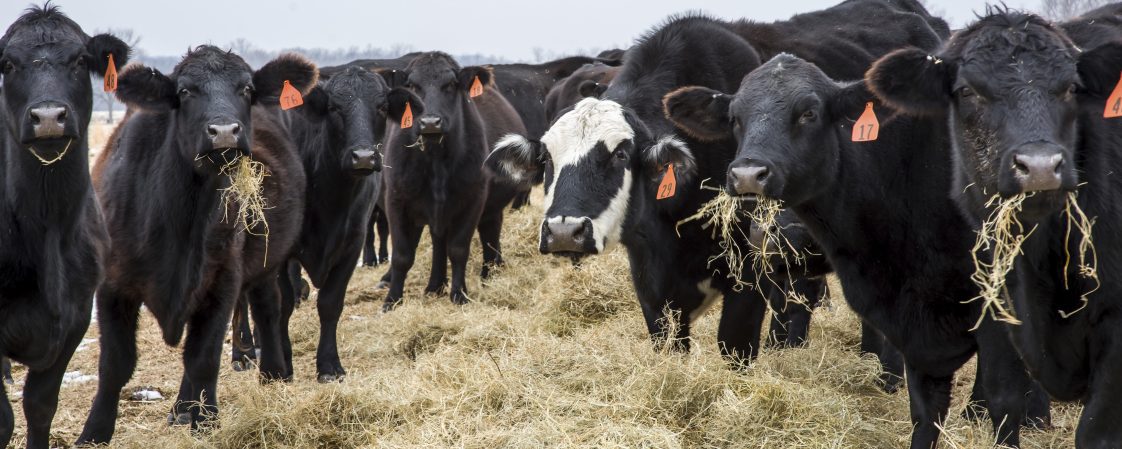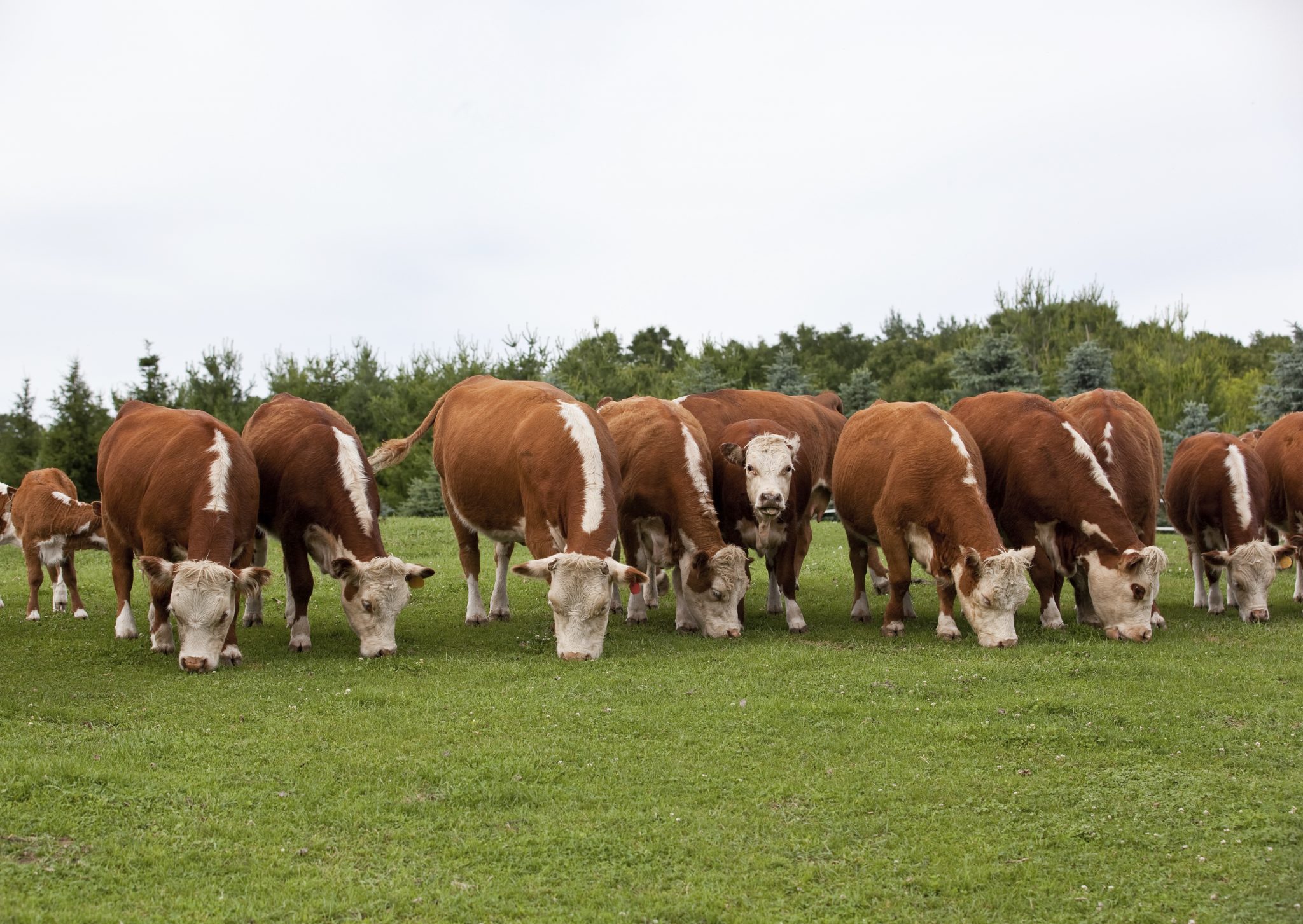Beef

Replacement heifers are an investment with long-term consequences, both financially and genetically. Heifers are evaluated based on breed, physical soundness, conformation, genetic analysis, growth, body condition score, visual appraisal, etc.
In addition, heifers should receive a thorough breeding soundness examination to ensure selection of the animals that are most likely to be reproductively sound. It doesn’t matter how good a heifer’s calf would be if it is never born.
Performing breeding soundness examinations approximately one month before breeding allows for selection of heifers with the best reproductive potential. Heifers with poor reproductive potential can be culled before incurring additional costs associated with their maintenance. Ultimately, breeding soundness examinations allow for more effective utilization of valuable feed and pasture resources for heifers that are reproductively sound. Heifers that conceive early during their first breeding will calve earlier and wean older, heavier calves than heifers that conceive later in the breeding season. In addition, heifers that conceive and calve early with their first calf tend to continue to conceive and calve early throughout their productive lives.
Two important aspects of heifer breeding soundness examinations are reproductive tract scoring and pelvic area measurements. This is in addition to an overall physical assessment (conformation, physical soundness, body condition score, teeth, eyes, udder, etc.).
Reproductive Tract Scores
Reproductive tract scoring is a method for evaluating reproductive tract maturity and cyclicity in pubertal heifers. This evaluation is done via transrectal palpation or ultrasound of a heifer’s reproductive tract to determine development. Heifers are assigned a reproductive tract score (RTS) of 1–5 based on uterine size, uterine tone, ovarian size, and ovarian structure (table 1). Reproductive tract scoring facilitates selection of heifers with good reproductive potential and culling of heifers with poor reproductive potential. Reproductive tract scores are moderately heritable.
Table 1. Heifer Reproductive Scores
| Reproductive Tract Score | Uterine Horns (diameter) | Length of Ovaries (mm) | Height of Ovaries (mm) | Width of Ovaries (mm) | Ovarian Structures |
|---|---|---|---|---|---|
| 1 | Immature < 20 mm | 15 | 10 | 8 | No palpable follicles, no tone |
| 2 | 20–25 mm | 18 | 12 | 10 | 8 mm follicle, no tone |
| 3 | 25–30 mm | 22 | 15 | 10 | 8–10 mm follicle, slight tone |
| 4 | 30 mm | 30 | 16 | 12 | >10 mm follicle, good tone, corpus luteum possible |
| 5 | >30 mm | >32 | 20 | 15 | >10 mm follicle, good tone, corpus luteum present |
Pelvic Area Measurements
The many reasons for calving difficulty (dystocia) in cows and heifers include, but are not limited to, the following:
- Overconditioned dam. Too much fat around the pelvis can lead to a smaller birth canal.
- Malformation of the calf or the dam.
- Abnormal position of the fetus in the birth canal.
- Uterine torsion.
- Dystocia because the birth canal (mainly the vagina and vulva) does not stretch enough for the calf to be delivered.
- Disproportion between fetal size and heifer/cow pelvic area (i.e., the fetus is too large or the cow’s pelvis is too small). This is the most frequent cause of dystocia in beef cows and heifers.
Larger, heavier heifers do not always have the largest pelvic areas. Measuring the pelvis before the breeding season allows selection of heifers with larger pelvic areas and culling of heifers with smaller pelvic areas. A 12- to 14-month-old heifer’s pelvis will continue to grow. Heifers with smaller pelvic areas during prebreeding soundness examinations will continue to have proportionally smaller pelvic areas as cows.
 Pelvic area is calculated, in square centimeters (cm2), by multiplying the width of the pelvis × the height of the pelvis. Pelvic width and height are measured in centimeters transrectally with a pelvimeter. Dividing pelvic area by a conversion factor (table 2), based on heifer age and weight, will then estimate the birth weight of a calf that a heifer should be able to deliver without difficulty. This does not estimate the birth weight of a heifer’s calf, but rather provides an estimate of how big of a calf she could safely deliver.
Pelvic area is calculated, in square centimeters (cm2), by multiplying the width of the pelvis × the height of the pelvis. Pelvic width and height are measured in centimeters transrectally with a pelvimeter. Dividing pelvic area by a conversion factor (table 2), based on heifer age and weight, will then estimate the birth weight of a calf that a heifer should be able to deliver without difficulty. This does not estimate the birth weight of a heifer’s calf, but rather provides an estimate of how big of a calf she could safely deliver.
Divide pelvic area (pelvic height × pelvic width) by the appropriate conversion factor based on heifer weight and age to estimate the birth weight of a calf that a heifer should be able to deliver without difficulty. Example for estimating the deliverable calf birth weight of a 12-month-old heifer that weighs 800 pounds:
- Measured pelvic height = 15 cm
- Measured pelvic width = 12 cm
- Calculated pelvic area = 15 cm × 12 cm = 180 cm2
- Ratio from chart = 2.3
- Estimated deliverable calf weight = 180 ÷ 2.3 = 78 pounds
Table 2. Conversion Factors for Various Heifer Weights and Ages to Calculate an Estimated Deliverable Calf Birth Weight
| Heifer Weight | Heifer Age at Time of Measurement 8–9 months | Heifer Age at Time of Measurement 12–13 months | Heifer Age at Time of Measurement 18–19 months | Heifer Age at Time of Measurement 22–23 months |
|---|---|---|---|---|
| 500 pounds | 1.7 | 2 | - | - |
| 600 pounds | 1.8 | 2.1 | - | - |
| 700 pounds | 1.9 | 2.2 | 2.6 | - |
| 800 pounds | - | 2.3 | 2.7 | 3.1 |
| 900 pounds | - | 2.4 | 2.8 | 3.2 |
| 1,000 pounds | - | 2.5 | 2.9 | 3.3 |
| 1,100 pounds | - | - | - | 3.4 |
Conclusion
Replacement heifers are a financial and genetic investment, so always fully evaluate potential replacements to optimize reproductive performance. Work with your regional Extension agent and the Alabama Beef Cattle Improvement Association to find and/or develop the replacement heifers with the best genetics to meet your herd goals, and work with your veterinarian to conduct breeding soundness examinations before the breeding season.
Soren P. Rodning, Extension Veterinarian, Associate Professor, Department of Animal Sciences, Auburn University; Julie A. Gard, Professor, Department of Clinical Sciences, Auburn University; Michelle F. Elmore, Extension Animal Scientist/Beef Cattle Improvement, Alabama Cooperative Extension System; Josh Elmore, Animal Science and Forages Regional Extension Agent III, Alabama Cooperative Extension System; Misty A. Edmondson, Associate Professor, Department of Clinical Sciences, Auburn University
Reviewed July 2023, Breeding Soundness Examination for Replacement Heifers, ANR-2263

